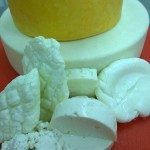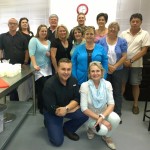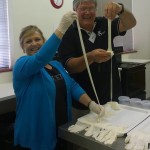For help with rennet or to purchase rennet, please contact Elaine
Landbou Radio – Nov 2022 – 1st interview
Gerda le Roux van Landbou Radio praat met my oor die beginsels van kaasmaak, kulture en rennet en elkeen se funksie en toepassing in die proses van kaasmaak.
Gerda le Roux from Landbou Radio talks to me regarding the principles of cheese making, cheese cultures and rennet and the function and application of each in the cheese making process.
Buy cheese making kits and ingredients from:
Rennet does work, even with antibiotic in milk
Ons gesels met Landbou Radio oor ons volgende 2019 kaas kursusse in die Vrystaat en Kaap
Kaaskursusse Suid Afrika
Cheese Courses South Africa
Buy rennet in USA and Canada
Cheese Course, Black Fox Restaurant, Harties NW, Feb 2017
Cheese Course, DunElm Guest Farm, Clarens FS, Feb 2017
Cheese Making Course using our rennet
You can now buy rennet directly from the online shop in South Africa!
Hi, Cheese Making Fans
Buy Rennet
directly from the online shop in South Africa at:
http://cheesemaking.co.za/shop/10-rennet-south-africa

Regards,
Leon
http://www.answers.com/Q/Where_can_you_buy_rennet_tablets_in_south_Africa
Rennet Suppliers South Africa – Buy Rennet
https://rennet.co.za
For cheese making questions please mail Elaine on info@cheesemaking.co.za
For other cheese-making ingredients and supplies as well as cheese-making kits, please visit https://cheesemaking.co.za/shop – search bar top right
• rennet tablets dischem • rsa where to buy rennet tablets • buy rennet South Africa rennet South Africa • buy rennet at clicks • rennet for cheese making South Africa • how much is rennet in Durban • rennet tablets • dischem rennet rennet near me rennet halal rennet cape town rennet cheese
Rennet for Slow Food Cheese
http://slowfoodcapetown.co.za/suppliers/cheese/rennet/
In cheese making we do get an acid set in some cheeses, but this is not always convenient or desirable and some cheese do require earlier coagulation, like sweet milk cheeses for example.
Rennet is a curdling agent and enzyme that acts on the milk protein casein, causing separation of the milk into solid curds and liquid whey.
Some soft acid set cheese, for example, need a very small amount of rennet with an long, extended setting time for acid formation from the cultures as well, otherwise they will go rubbery. This then also means that the longer the ripening time with the culture, and thus the more acid has formed, the shorter the setting time. So rennet is a stomach enzyme and thus performs much better in an acid environment.
Several proteinases will coagulate milk under suitable conditions of pH, temperature, dosage, available calcium and protein, etc., but a lot of them are just too proteolytic according to their milk clotting activity. In most cheeses the main job of rennet is to coagulate the milk, so that it can be cut and drained from most of its moisture to preserve it. After that we do not really want the proteolytic – protein breakdown – to continue. Too much proteolytic activity from the curdling enzyme can cause defects, like bitterness in the cheese, as well as texture faults.
Animal rennet or chymosin is prepared by extracting the dried and/or salted gastric tissue with 10% sodium chloride and activating and sterilising the extract. Usually we find that as the animal ages the more pepsin and the less rennet/chymosin is in the stomach. So rennet from a young calf can be 96% chymosin, but from an older animal can be 20% or even less chymosin.
So although some plant proteinases, like fig juice, nettle extract and paw-paw juice has been used for some cheeses in some cultures, it is predominantly rennet from animals that have been used.
In recent decades these animal based rennets have been substituted to a large degree with microbial rennets from GMO and non-GMO origins. GMO sources resemble animal rennet exactly as can be expected, but the non-GMO microbial rennet does not actually structurally or chemically resemble actual rennet or chymosin – it is just another enzyme with the ability to curdle milk.
Rennet gelation of milk involves the conversion of milk from a colloidal dispersion of stable micelles to a network of aggregated paracasein micelles in a continuous phase entrapping fat and moisture in its pores.
Rennet – Cape Town – Johannesburg, Gauteng – South Africa
Cheese making course – June 2014
Hi, Cheese fans
Our next cheese making course is coming up in Stellenbosch on 26,27 June 2014.
Please mail Elaine for info at elaine@alivingway.com.
See you there,
Leon


